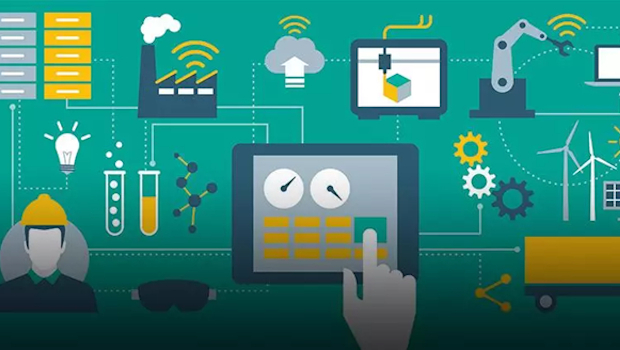
Putting IIoT into practice
In association with RS Ireland
The Industrial Internet of Things (IIoT), Industry 4.0, the Fourth Industrial Revolution (4IR) – whichever name you use to describe use of digital connectivity in industry – experts all seem to believe that massive changes are on their way for manufacturing businesses.
Research by Make UK, the Manufacturers’ Organisation (formerly EEF), showed that 96% of manufacturers believe 4IR will be about connectivity and communication and 99% felt it was about getting actionable insights from data.
“Most manufacturers are aware 4IR is happening and that they need to do something about it. But what they are actually doing about it varies widely,” says Martin Strutt, former region director at Make UK. “We’ve divided manufacturers’ adoption into three phases – conception, evolution and revolution. People in the conception phase are simply trying to work out what it is and what it might mean for their business.
So what can IIoT offer manufacturers and why is so much being written about it? “IIoT technology itself is just technology,” says Richard Jeffers, director for industrial solutions at RS Components. “It is how and where we apply and integrate it with other capabilities that will make the compelling difference.
“Companies that get this right will be able to significantly improve a variety of aspects of their business from the actual manufacturing process to maintenance, repair and operations (MRO). To really get value from these emerging technologies look for a problem you’ve traditionally been unable to solve, then see if IIoT can break the impasse. These technologies can be harnessed to give you a previously unachievable solution” he adds.
Next steps for your organisation
Embarking on a connected journey can feel overwhelming, but there are simple steps that you can take to introduce and develop IIoT within your organisation.
Remember that you don’t have to be the expert
“For engineers, getting as much knowledge as possible is key. They should use forums and communities such as DesignSpark, as well as trade magazines and LinkedIn,” says Simon Chabriere, offer management director for Telemecanique Sensors, a global player in sensors and sensor-related technology.
What problem are you trying to solve?
“Start small,” continues Chabriere. “You can always collect data on another area later on. Focus on the objective. IIoT projects can go on for years if the objective hasn’t been fixed. Business value from data analysis can be gained in a reasonably short amount of time.”
Run some tests
“The rapid rate of technology evolution can be off-putting,” acknowledges Chabriere. “At one stage, you do have to jump in.” However, you don’t have to jump in straightaway. “Testing and developing is an inexpensive way of dipping your toe in the water – and forums help here as you can share experiences and insight,” he says.
Which assets would benefit most from IIoT?
“We always recommend starting with a reliability and maintenance criticality assessment to ascertain which assets are the most critical and cost the most when they fail,” says David O’Reilly, former president of Fluke Digital Systems, a world leader in the manufacture, distribution and service of electronic test tools, biomedical equipment and networking solutions.
What do you already have data for?
O’Reilly also recommends looking at where data already exists in your organisation and building on that: “What data would be useful to add, such as vibration or thermal imaging, temperature or pressure – key monitoring areas to help in the move from a reactive or preventative to a predictive maintenance programme?”
Keep the context in mind
“Measure in context,” is O’Reilly’s key message. “It’s one thing knowing something is vibrating, but unless there is proper namesake data for the asset, it won’t be useful. A strong data set can lead to big wins. Be sure to document those as a proof of concept to help convince other stakeholders of the benefits.
It’s clear that all of the experts are in broad agreement – while IIoT adoption will not happen uniformly across manufacturing and its various sub-sectors, it is going to happen. The next five to 10 years are likely to see significant changes across all industries.







Subscribers 0
Fans 0
Followers 0
Followers